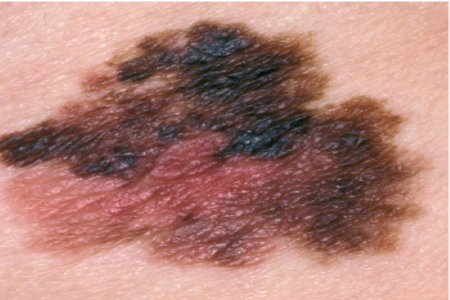Castle Biosciences, Inc.’s DecisionDx-Melanoma can predict sentinel lymph node (SLN) positivity risk to help guide risk-aligned sentinel lymph node biopsy (SLNB) decisions, potentially reducing the number of unnecessary procedures and increasing the SLNB positivity yield if the procedure is performed, according to a new study in the World Journal of Surgical Oncology.
DecisionDx-Melanoma is a gene expression profile risk stratification test. It integrates a patient’s tumor biology with their personal clinicopathologic factors to help answer the likelihood of SLN positivity and risk of recurrence in patients with melanoma. Current National Comprehensive Cancer Network (NCCN) guidelines suggest foregoing SLNB when the likelihood of finding a positive SLN is less than 5%, to consider SLNB when between 5-10% and to offer the surgery when the likelihood is above 10%.
This study evaluated the performance of DecisionDx-Melanoma in predicting the risk of SLN positivity in 156 melanoma patients with known SLN outcomes at the ChristianaCare Helen F. Graham Cancer Center & Research Institute in New Castle County, DE.
In the study, none of the patients (0/30) considered low-risk by the DecisionDx-Melanoma test (less than 5% predicted risk of SLN positivity) had a positive SLN, compared to a 31.9% SLN positivity rate (30/94) in patients predicted to have greater than 10% risk by the test. Of the 91 patients in the study who had American Joint Committee on Cancer eighth edition (AJCC8) T1-T2 tumors, the DecisionDx-Melanoma test identified 30 of them as low-risk, demonstrating a significant potential SLNB reduction rate of 33% in this patient population (30/91). Further, DecisionDx-Melanoma accurately downstaged or upstaged patients to a more definitive status to either forego or offer the SLNB procedure.
“While SLNB is a common procedure used to determine possible tumor metastasis, our current criteria for biopsy may be overestimating a person’s risk of having a positive node, meaning we are probably performing more surgeries than necessary,” says lead author Joseph Bennett, M.D., MBA, surgical oncologist and system chief of surgery at LifeBridge Health in Baltimore, MD, in a news release. “By using the DecisionDx-Melanoma test to accurately stratify patient risk and help guide these important decisions and discussions with patients, we can avoid doing SLNB procedures in low-risk patients without missing melanoma metastases.”
“Our DecisionDx-Melanoma test has significant clinical utility in helping to rule-out and rule-in SLNB procedures, as this study showed,” adds Derek Maetzold, President and Chief Executive Officer of Castle Biosciences. “And as demonstrated by data we shared earlier this year from our ongoing prospective, multicenter DECIDE study, patients with low-risk DecisionDx-Melanoma results whose providers use the test to help guide decisions to avoid SLNB surgery still experience good outcomes.”1
The results of this study demonstrate that DecisionDx-Melanoma can allow for more precise and personalized management of melanoma patients, improving patient selection for the SLNB surgical procedure and reducing unnecessary procedures and their associated healthcare costs. Moreover, the data provide evidence that DecisionDx-Melanoma can identify patients with a low risk of SLN positivity who may safely forego SLNB, as well as those with a higher risk who may want to consider the surgery.


